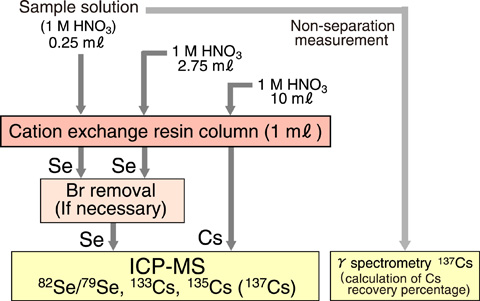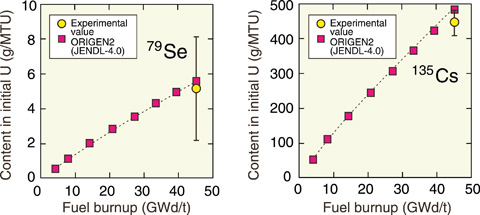
Fig.8-15 Procedure for determination of 79Se and 135Cs in spent nuclear fuel sample

Fig.8-16 Analytical procedure for 79Se and 135Cs

Fig.8-17 Comparison of measured values and calculated values obtained by ORIGEN2
High-level radioactive waste (HLW) produced in a nuclear fuel reprocessing plant contains long-lived radionuclides with half-lives of more than 104 years. Among such radionuclides, 79Se and 135Cs will govern the public dose originating from the HLW repository 104 to 106 years after disposal is implemented. Therefore, inventory estimation of 79Se and 135Cs in HLW is essential for realizing safe HLW disposal. However, the reliability of the nuclear data used for dose evaluation has not been sufficiently verified by experimental values because of difficulties in their measurement. In 79Se analysis, a sample containing a large amount of radioactive substances is necessary for accurate and precise determination because only a small amount of 79Se is present in HLW.
In this study, we developed a simple and reliable separation procedure to reduce the radiation exposure time (Fig.8-15). Mutual separation of Se/Cs along with removal of highly radioactive coexisting components and sources of interference in inductively coupled plasma mass spectrometry (ICP-MS) measurement was achieved by a single cation-exchange step (Fig.8-16). The analytical method presented in this study provided the first experimental values for the 79Se and 135Cs contents of spent nuclear fuel in Japan. In addition, the measured values showed good agreement with the values calculated using ORIGEN2 (an isotope generation and depletion code) based on the latest evaluated nuclear data library, JENDL-4.0 (Fig.8-17). This confirms that ORIGEN2 is applicable to the estimation of the 79Se and 135Cs contents of spent nuclear fuel.
The present study is the results of “Experimental study on the inventory estimation of long-lived and scarcely analyzed radionuclides in high-level radioactive waste (Stage I)” funded by Japanese 11 electric power companies.